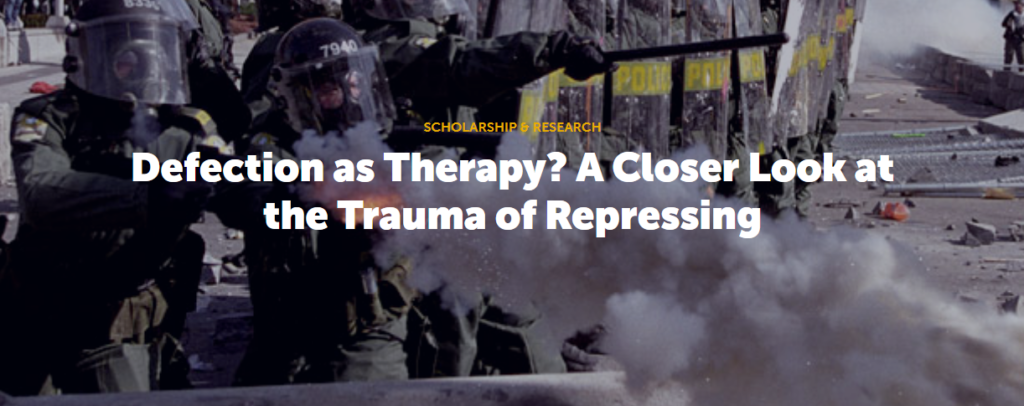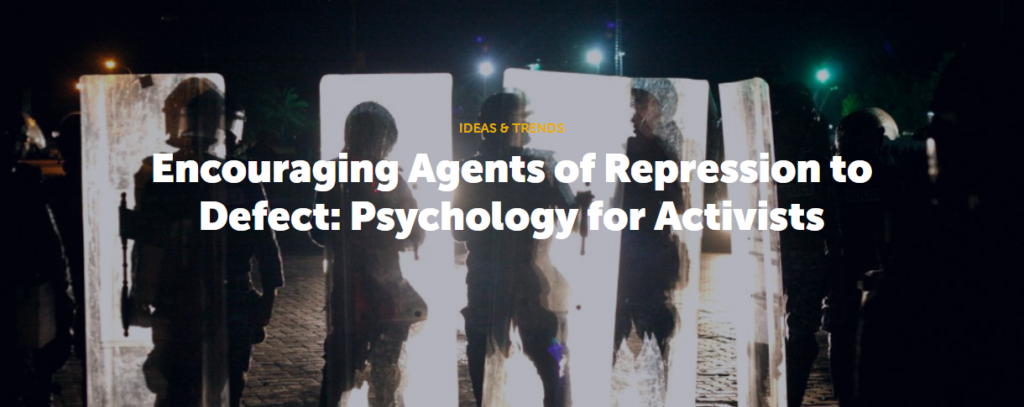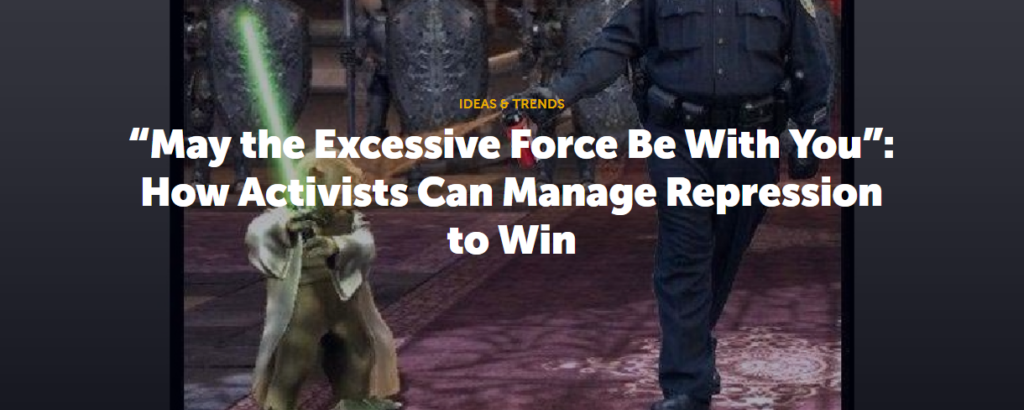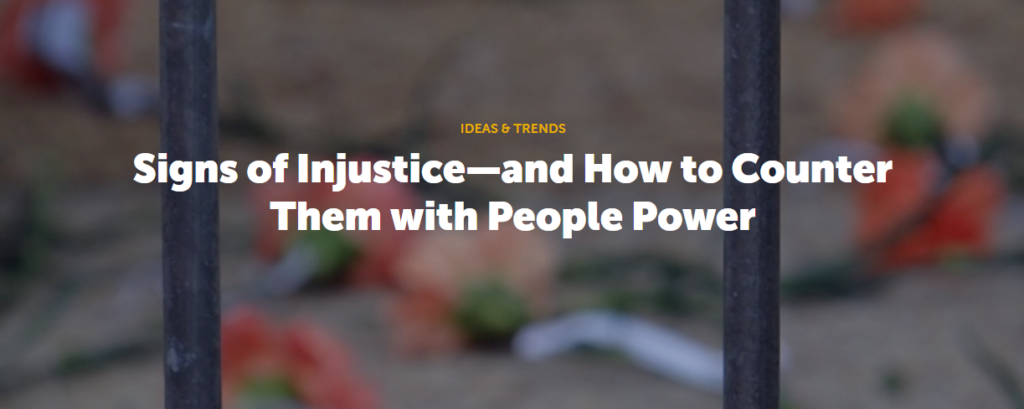Minds of the Movement
An ICNC blog on the people and power of civil resistance
When authorities use violence against peaceful protesters, many onlookers are shocked and dismayed. This reaction can cause the violence to backfire against the attackers in what is called political jiu-jitsu or the paradox of repression. However, this reaction only occurs sometimes; in lots of other cases, perpetrators pay little or no penalty for their abuse of power. That is why it is important to be aware of techniques that perpetrators use to reduce outrage about their use of repression—and counter-techniques to oppose this injustice. Our "Paradox of Repression" blog series explores these important but often overlooked dynamics of a nonviolent struggle, including repression management and repression psychology for activists.
By: Rachel MacNair, February 28, 2019
Would suffering from Perpetration-Induced Traumatic Stress (PITS) symptoms make agents of repression more likely to defect, or less? Do those suffering from PITS find defection to be a good therapy, and if so, is there a way of using this knowledge to encourage defections? [...]
Read more
By: Rachel MacNair, December 11, 2018
One lab experiment that focused on why people repress is the Stanford Prison Experiment, where participants were put in a simulated prison. The experiment was supposed to go two weeks, but had to shut down after six days. Participants got into a madhouse of social roles... The reason it was finally shut down was that an outsider with some authority intervened, doing on a small scale what nonviolent social movements do on a large scale. [...]
Read more
By: Lee A. Smithey and Lester R. Kurtz, November 5, 2018
The speaker yells to the police, “We are willing to give you a brief moment of peace. You may take your weapons and our friends and go. Please do not return.” Then, the crowd chants, “You can go! You can go!” The crowd finally leaves the police alone in a cluster, looking slightly bewildered and unsure, robbed of the kind of confrontation for which their training, armor, and weapons were designed. [...]
Read more
By: Brian Martin, August 30, 2018
In an age of fake news, in which conspiracy theories proliferate and spin doctors try to turn public attention away from major problems, it is ever more difficult to determine when an injustice is going on. Understanding the five techniques that perpetrators use to reduce outrage provide guidance for opposing injustice—for each technique, there is a counter-technique. [...]
Read more



